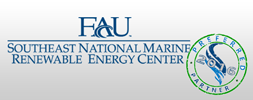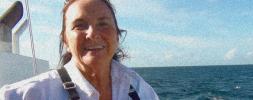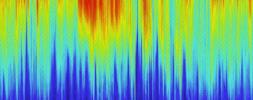The SNMREC Preferred Partner Program is an opportunity for our industry partners to collaborate more fully with the Center. This program is designed to dedicate SNMREC experts and resources to individual industry partner development needs.
Research
FAU’s Southeast National Marine Renewable Energy Center is implementing an at-sea testing capability for underwater turbines in the Florida Current in several phases. In addition to facility design and engineering, research and development (R&D) needs associated with this implementation span a wide range of broadly defined science and engineering topical areas.
SNMREC’s funding model is, whenever possible, to provide support for graduate research assistants and their advisors; the GRAs then work on a particular problem as a thesis/dissertation project. In some cases, these projects contribute toward the development of new tools for use in various SNMREC investigations in the future; in other cases, they address specific questions that are critical for progress to be made. Insofar as such projects always benefit from interactions with others working on related topics, it makes sense to assemble critical-mass groupings of the scientists who are directing the research. To that end, SNMREC has formed a number of R&D Working Groups.
The listing provided here is the initial attempt to organize R&D supported by the Center and should not be taken as the final, permanent set of groupings. New Working Groups are likely to be formed in the future, and it is possible that some will evolve by splitting and joining to various others. In this first cut, there are six groups:
Prognostics and Health Monitoring (PHM)
PHM is concerned with instrumenting and recording critical parameters of the systems under test. Because future commercial-scale deployments will require routine PHM as part of their maintenance and operations plans, implementation at this early stage will provide not only data crucial for testing purposes but also the ability to test various PHM strategies prior to commercial implementation.
Rotor & Blade Instrumentation (RBI)
Simple scaling arguments suggest that the forces on rotor blades in oceanic turbines will exceed those in wind systems by about a factor of ten. Understanding the behavior of blade designs and the materials used in fabrication is therefore a high priority for both industrial developers and for the test range itself. Because the NREL National Wind Technology Center has developed a variety of tools for the wind industry, adaptation of their methods is an obvious strategy for these new tools. There is also merit is using alternative approaches as well, and the several faculty members involved in this WG will provide that capability. This group will necessarily interact closely with the PHM group.
Flow Characterization & Simulation (FCS)
In addition to in situ measurements, both numerical and physical simulation of the flows on various scales associated with ocean energy development are important for addressing a range of problems. On large scales, the behavior of the Florida Current and, in particular, its response to commercial-scale deployments of arrays of turbines is a critical question. On smaller scales, individual wakes and how they assemble in arrays and thus affect downstream deployments are of concern. This group will interact with the Rotor Instrumentation group; the main distinction is that the latter is concerned with the effect of flows on the rotors while Flow Characterization is concerned with the converse, the effect of the rotors on the flow. Current resource assessment is implicitly embedded in this activity.
Materials, Corrosion & Biofouling (MCB)
This title is descriptive of the WG’s range of interests: given the challenges of marine deployments, work on improving the longevity of all components deployed is worth pursuing. This group will interact with both the PHM and Rotor Instrumentation groups from this perspective as well as from the strength-of-materials perspective.
System Dynamics & Stability (SDS)
The SNMREC test-bed system, consisting of a mooring and a deployment platform plus a turbine under test, needs to be carefully designed and well-understood in the dynamic marine environment. Improvements to any and all of the components are always welcomed, and research on this important topic will blend the operational aspects of the Center with its R&D activities.
Ecosystems Interactions (ECO)
From the marine atmospheric boundary layer downward through the sea surface and the water column to the ocean bottom, interactions of the SNMREC equipment with all components of the marine environment are high-visibility issues that must be carefully investigated. Just as the marine environment will affect the equipment, so will the equipment affect all of the ecosystems in the water column. Further, as commercial development proceeds, benthic habitats between the deep-water deployments and the on-shore cable terminals will be affected as well. This WG is tackling this range of issues with new instrumentation monitoring techniques. Of particular importance will be the results of these investigations vis-a-vis regulatory requirements for permitting.
For more information about any of these research areas, please send inquiry to snmrec@fau.edu.



